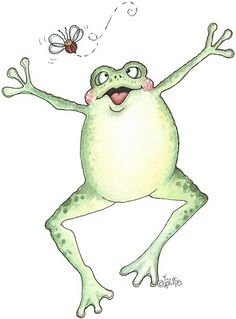The practice of eating bugs is called entomophagy, or insecetivory, and is a common practice in many tropical and developing countries. The palm weevil, for example, is a type of beetle...and it is considered a luxury in Asia, Africa, and South America. Really, insects aren't all that different from crustaceans, or shellfish, which people in the US eat all the time. I found it interesting that those people who have allergies to shellfish may, indeed, also be allergic to insects! Such a pity. They may never get to eat this wonderful and healthful food. (The more for me?)
There are plenty of good reasons to partake of insects, though. For starters, they're protein-rich and loaded with unsaturated fats, making them the perfect substitute for poultry and fish. Second, haresting insects is a lot more environmentally friendly than raising livestock. Livestock accounts for 14% of the greenhouse gas emissions produced worldwide, thus making a major contribution to global warming. This could be greatly reduced if more humans ate bugs instead of meat. Third, worldwide requirements of protein are expected to double by 2050...not that far away. Many citizens in developing countries can't afford meat, but they can afford insects. Fourth, worldwide, beetles are the most-consumed insect. This makes perfect sense since the lowly beetle makes up 40% of the world's insect population! Here are the top six insects used as food sources:
1. The beetle. Tupically, only the beetle larvae is consumed, and not the fully-developed beetle. In Cameroon, the women who harvest the palm weevil, put their ears to the trunk of a tree and attempt to listen for beetle larvae; specifically for beetles instar, the "most delectable developmental phase for dining." As for me, I like beetles any way that I can catch them. There are several other species of beetles that eaten worldwide including; aquatic beetles, wood-boring larvae, and dung beetles. In the Netherlands, the lowest yellow mealworm and superworm are used to feed retiles and fish. Humans in the Netherlands are also encouraged to eat insects for their high nutritional value. 2. Caterpillars. Some cultures do eat full-grown butterflies and moths, but most often it's the larvae, and caterpillers, that are consumed. In Mexico, it's the maguey worm that is most prized by farmers and are picked while caterpillars. Then, they are either braised or deep fried. Sometimes, they are served with a spicy sauce and wrapped in a fluffy, warm tortilla. These worms are also the kind found in the bottom of the bottle of the alcoholic spiri,t mezcal. The most popular caterpillar in the world, for eating anyway, is the mopane caterpillar from the Mopane Woodlands that extend over South Africa, Mozambique, Nambibia, Botswana, Angola, and more. It is estimated that 9.5 billion caterpillars are harvested each year in South Africa, reaping $85 million in annual sales. 3. Wasps, bees and ants. Ants are incredible animals and of incalcuable benefit to humans. Plus, they're good eating! Ants engage in nutrient recycling and are a form of pest control for crops. "Ant eggs" (larvae and pupae from the weaver ant) are popular in Asia. In Thailand, these eggs are sold in cans. The black weaver ant is often used in health foods and tonics, available in Chinese markets. In Japan, the yellow jacket bee is a delicacy and a commodity that needs to be imported from Vietnam and Australia to keep up with the demand by the Japanese. Bees are highly nutritive and rich in amino acids, energy, essential minerals and B vitamins. Little else is known about the potential of bees as food, but nesting bees could easily be cultivated. Bee eggs are highly prized in nothern Thailand and are quite costly to purchase at market. 4. Grasshoppers, crickets, and locusts. (Now we're talking good food!) Chances are, wherever you live and see a grasshopper, it's edible. In some rural areas of West Aftrica, crickets are sold at roadside stands as snacks. In Mexico, the chapuline (the most popular cricket in Latin America) is cleaned then toasted with lemon, garlic, and a little salt. Locusts occur in swarms and pretty easy to catch. Locusts are migratory and, therefore, become seasonal treats in Africa and the Middle East. Grasshoppers and locusts are best collected in the early morning hours. They are cold-blooded critter and are immobile when there's still a chill in the air. Crickets are hard to farm because they have a long life cycle. 5. Chicadas. If you live in the northeastern part of the United states, you probably know the periodical chicadas. In the spring, huge broods of these winged buzzers, crawl out of the ground after spending 17 years in the ground sucking up tree sap! Chicadas can be boiled or deep fried and, when eaten raw, have a taste that is similar to asparagus. Chicadas are often used in quiche, pies, and cookies. 6. Pentatomids. Also known as shield, or stink bugs. In sub-Sahara Africa, the pentaomid bug is eaten roasted, and oils from these bugs are collected and used in food preparation. Most species of pentatomid bugs that are eaten are aquatic. They are used to make ahuahutle, a Mexican caviar. Pentatomids are semi-cultivated by farmers.
I don't know whether or not these interesting facts have tempted you to try out a few of my favorite foods. I hope so! Bug could very well become the next big thing in fine dining cuisine.

 RSS Feed
RSS Feed